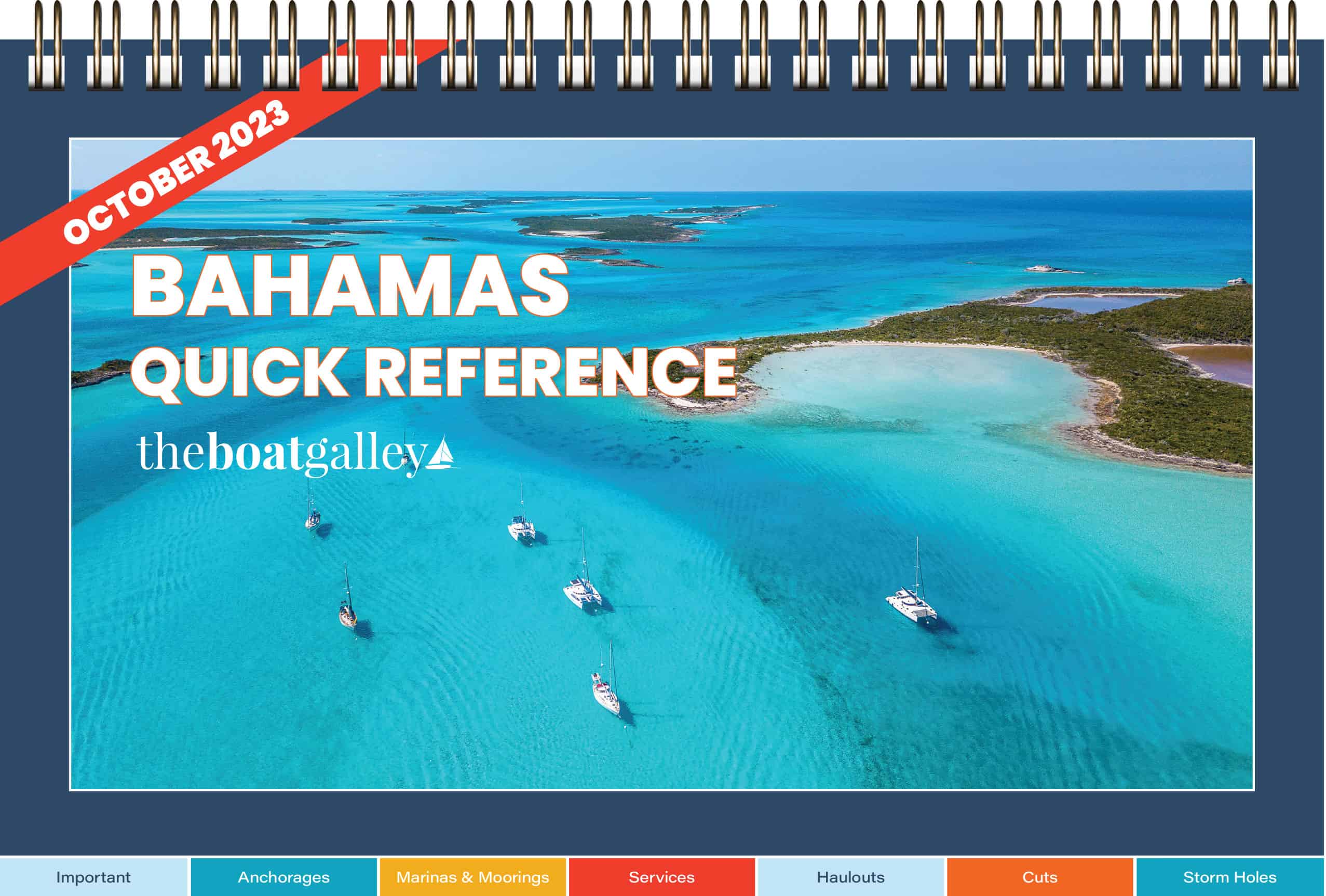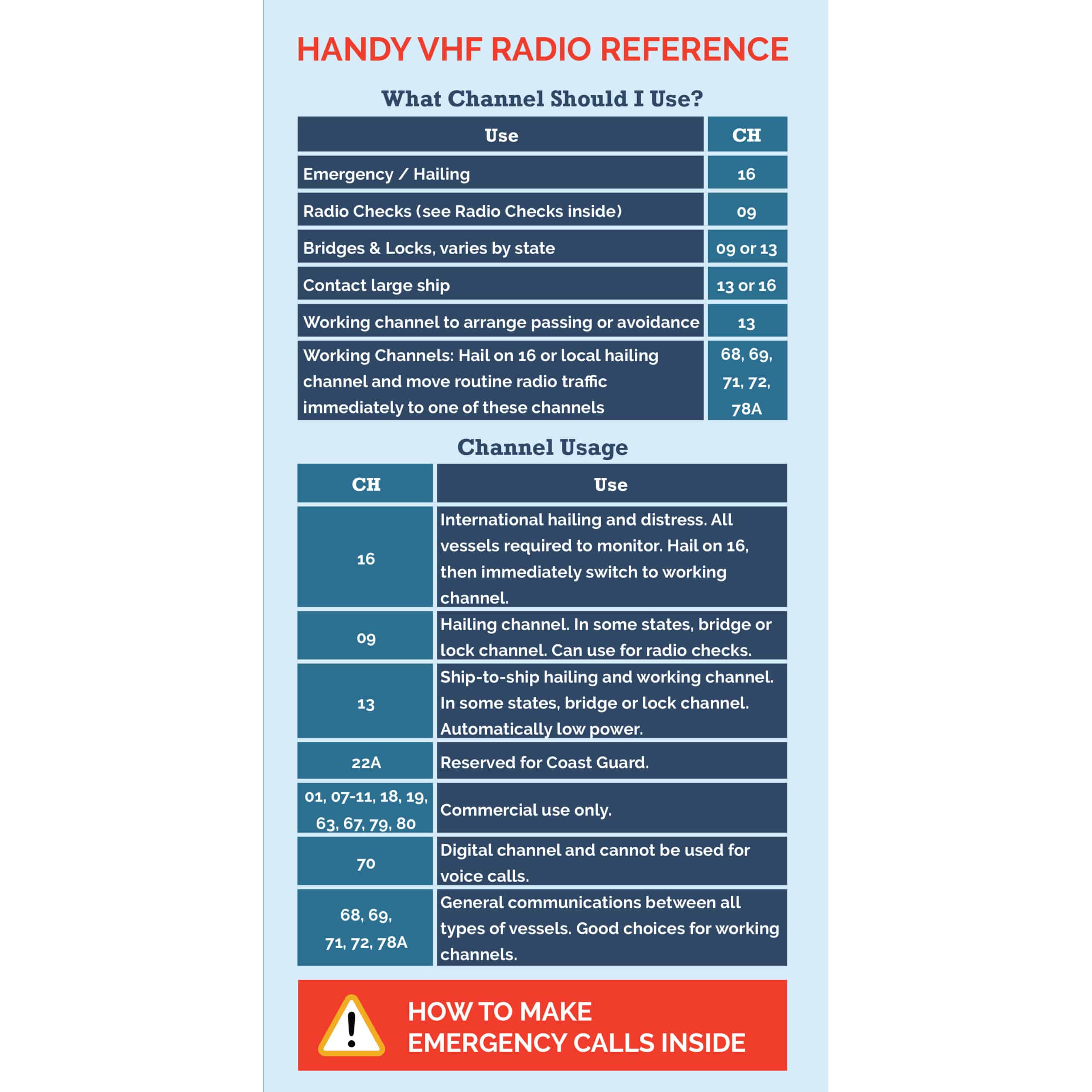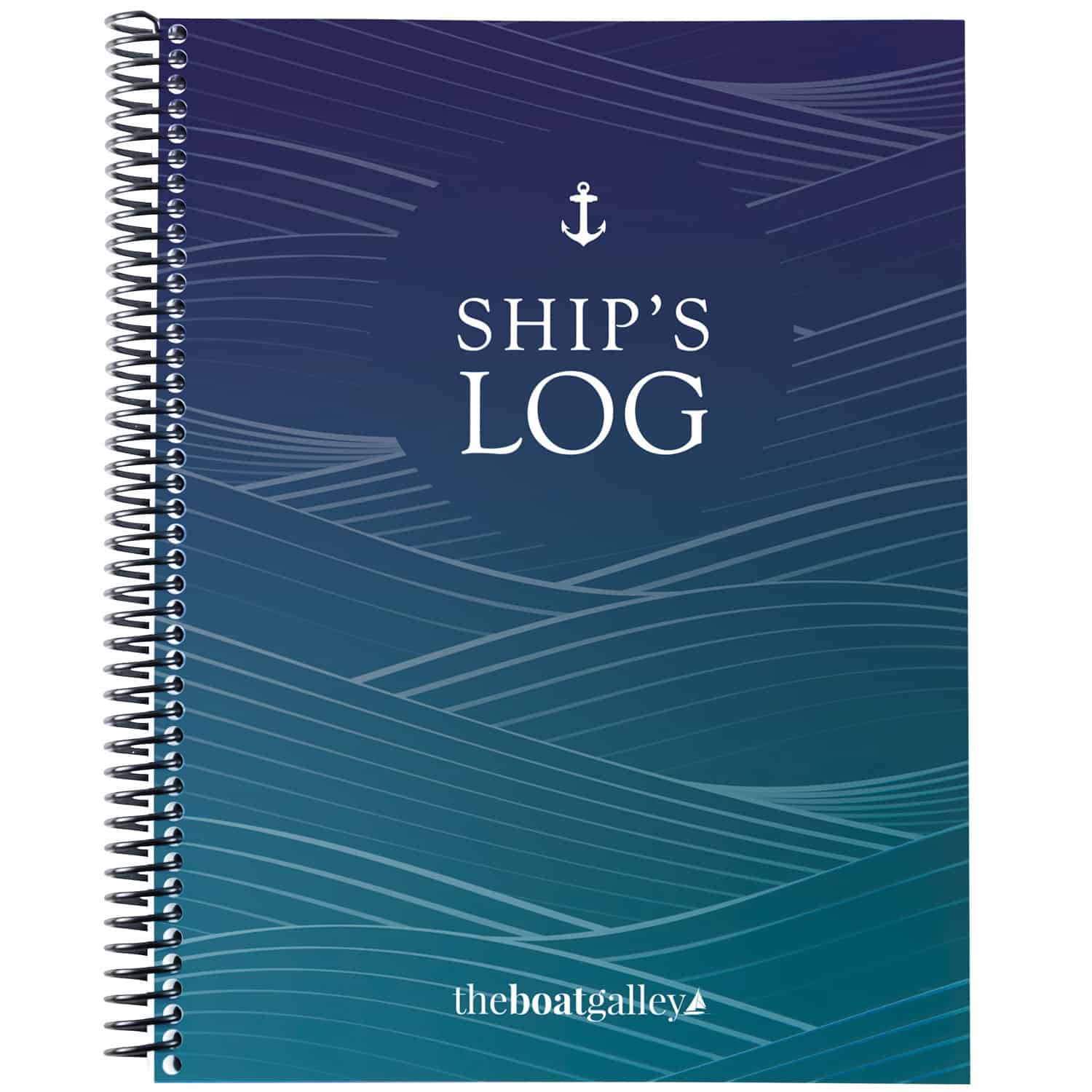On a cruising boat, your dinghy is your car. Losing it is a big financial hit and renders you immobile.
We worry about having our dinghy stolen . . . but in my experience, just having it float free happens more frequently.
So a few tips both to avoid losing it and prevent theft as well as a couple things that may help you get it back if it does go walkabout. Most of these apply to a kayak or SUP as well.
Always tie your dinghy up yourself (or your partner/family) — don’t rely on someone else to do it properly. Never assume that someone else — no matter how experienced they are — will tie it securely. Further, if you do it yourself and it comes loose, you have no one else to blame.
Learn the proper way to tie your dinghy to a cleat and also to a bar or ring and do it the same way every time. Make sure that everyone on board your boat does it the same way. When you get into a habit, you’ll do it correctly even when you’re bone tired, half-sick or perhaps had an extra drink at a fun beach bar. (It also helps if you ever have to untie the dinghy in a hurry).
Look at your dinghy bow line and attachment points every time you tie up. It only takes a second to see if anything needs repair or maintenance (and, it goes without saying, take care of things promptly).
If there is a lot of current, use a second (backup) line. Make sure that it is totally independent — a separate line, attached to the dinghy in a different place than the primary painter, and tied up to a different fitting ashore or on the big boat.

Separate lines, separate attachment points on both the dinghy and Barefoot Gal
If you have beached the dinghy, tie the painter to something as well or dig the anchor in. Even if the tide is going out, you never know when there could be a big wake that floats the dinghy . . . or if you may be delayed getting back to the dinghy until after the tide turns.
When anchoring your dinghy, be sure to use enough scope and be sure that the anchor is securely attached to the rode and the rode is securely attached to the dinghy. Again, always look at the rode and attachment points when deploying and retrieving the anchor — things that looked just fine yesterday may not be today! Where possible, dive on the dinghy anchor to make sure it’s well dug in. Obviously, too, using a good dinghy anchor will significantly improve the odds that the dinghy won’t drag anchor. We love our little-bitty baby Mantus dinghy anchor.
At night or if storms or high winds threaten, get the dinghy out of the water if at all possible. There’s a lot less chance of theft and “driftaways” if the dinghy is out of the water. We simply have a “standard operating procedure” that the dinghy comes out each and every night. No questions, no “should we do it?”
The key is to make it easy. We have davits on our current boat and they make it so easy. On our previous boat with no davits, we took the outboard off every night and hoisted the dinghy with the spinnaker halyard so that it was level with the deck (once we installed out whisker pole, we used that to keep the dinghy off the side of the boat). Even if you can’t get the dinghy out of the water, simply hoisting the outboard to the stern rail will make the dinghy far less attractive to thieves and, should it float off, at least you won’t have lost the motor.
If you simply can’t get the dinghy out of the water before a storm hits, at least get the second bow line (safety line) tied off.
Towing a dinghy (or other water toy) is asking for trouble. I can’t tell you the number of people that I know who have lost a dinghy while towing it — and didn’t realize it immediately and never did find it. Every boat is different, but davits are great for short hops in benign conditions; ocean passages or snotty weather call for putting it on the deck.
Give a “unique look” to your dinghy — preferably very bright so that it’s easier to spot if it drifts off (gray dinghies are hard to spot on the water or tucked under mangroves). We’ve seen bright pink, yellow, blue, green, red and orange, either painted or the fabric chosen for chaps. Stripes, polka-dots and even cow spots can make a dinghy hard to mistake. While easy-to-identify dinghies may not stop professional theft rings, they certainly seem to deter small-time opportunistic thieves.

We padlock the “ears” of the dinghy motor together. There are various locking devices that you can buy to theoretically make it harder to cut a padlock off, but our experience in the self-storage industry has taught us that if someone really wants to cut your lock off, they’ll figure out how to do it. That said, a lock of any sort will deter many thieves.
Chaining (or using a bike cable) your dinghy to a dock or “big boat” with a padlock is also a deterrent. The big problem is where to attach it to the dinghy that isn’t easy to cut through. And the reality is that most padlocks can be clipped off in just seconds with a pair of bolt cutters. So it’s a deterrent, and will help if the dinghy becomes untied, but nothing is 100% theft-proof.
Keep a record of your dinghy’s serial number and registration number if it has one, as well as the engine serial number. Should it be stolen (and recovered), this will help you prove ownership.
Take photos of the dinghy from several angles and some with you (and boatmates) in them. Again, it will help with proof of ownership. Keep a copy of the photos on your phone — if your dinghy should go missing, it’s an easy way to SHOW other people what it looks like (good in general, but especially good in countries where you are not totally fluent in the language).
If the dinghy does go missing, immediately post the photos on social media, particularly on cruisers’ groups in the area. Facebook, Twitter and Instagram are all good for getting the message out quickly. And make a general call on the VHF (whatever channel is the local hailing channel). It’s important to tell when it disappeared, from where, and what direction wind and current were in. Ask people to share — and be sure to post an update (better, add a line at the beginning of the original post) if it is recovered.

Quickly find anchorages, services, bridges, and more with our topic-focused, easy-to-use waterproof guides. Covering the ICW, Bahamas, Florida, and Chesapeake.
Explore All Guides

Carolyn Shearlock has lived aboard full-time for 17 years, splitting her time between a Tayana 37 monohull and a Gemini 105 catamaran. She’s cruised over 14,000 miles, from Pacific Mexico and Central America to Florida and the Bahamas, gaining firsthand experience with the joys and challenges of life on the water.
Through The Boat Galley, Carolyn has helped thousands of people explore, prepare for, and enjoy life afloat. She shares her expertise as an instructor at Cruisers University, in leading boating publications, and through her bestselling book, The Boat Galley Cookbook. She is passionate about helping others embark on their liveaboard journey—making life on the water simpler, safer, and more enjoyable.











Dorothy Rogers Marusak says
One evening my husband and I were sitting on the bow watching the sunset. Sun goes down, we go back to the cockpit and he says Where’s the dinghy? Which had been left tied to a cleat on the back. I look at the out going current, shrug and say Cuba? Thankfully a good samaritan saw it drifting by and rescued it. It now gets double tied, or pulled up on the davits at night!
The Boat Galley says
Glad it was returned! Yep, it’s a real sinking feeliing when you realize it’s missing.
John Hill says
Daniel Krumbein Matthew Ross Adam Dawson
Lesley Feeney says
Michael Feeney
Diane Mercaldo says
We were at our mooring doing some boat chores and I noticed a dingy floating down the way, I then realized it was OURS! No way to swim to it since the current was swift,luckily a neighbor was on his boat and he rescued ours. The reason ours left was the shackle had unscrewed itself. We now zip tie all shackles with a wire spinner.
The Boat Galley says
Oh no! Glad you got it back. And good point about the shackles.
Allan Smith says
Our dinghy was stolen from the dinghy dock here in Vero Beach two weeks ago. We were talking to a young couple in their 30’s and security cameras showed them taking it about 11 am. No, we did not lock it up. I guess sailing down the East coast and in the Bahamas without incident made us slack.
Showed photos to a bus driver and she recognized them as a homeless couple she drops off at a park every night!
I went to said park to look for them and found my dinghy instead! It was run full speed into the bushes and the motor was buries in the mud so the prop was invisible.
Police found the nefarious duo the next day and since the security system was so good (A Sams Club item), we don’t even have to hang around for the court date:)
Allan and Ellie
Carolyn Shearlock says
Sorry to hear you had a problem, but a great outcome!
Peter Bould says
We never rely on “tying” the dinghy painter. We have spliced in a large S/S hook with clip. And we always secure the dinghy with this. Had too many guests who did not know how to tie a painter.
Bob Morgan says
I have a couple more. Reflective strips to be seen at night when moving or when lost and a garden patio solar light on a vertical 3′ stick in the aft corner to provide running light compliance and same reasons as reflective strip.
Anonymous says
Great ideas! Thank you!
Anonymous says
Any luck with yours, Cindy Peterken??
Peter Bould says
We have had a large stainless clip on our painter. Never come free. Quick to attach. Bullet proof. And idiot proof.
Marco Rancourt says
I just attended a seminar by Brandon Wright (https://www.brnkl.io/about/), at the Virtual Toronto Boat Show. He suggested using a lock cable with an alarm that goes off when the cable gets cut. This might be enough for thieves to flee to avoid being spotted. Unfortunately, I only found one brand on internet: Trimax TAL2572 6′ x 25 mm Alarm Lock and Quadra-Braid Cable, available on Amazon.ca.
Carolyn Shearlock says
I’ve never heard of an alarmed cable — great idea!
Bill Murdoch says
It is a shame that the Trimax alarm cable lock is only 6 ft long. That is only 3 ft when looped. I would want more at the dinghy dock. If it is shaking that sets it off, will it alarm for boat wakes?
Bill Murdoch says
It is a shame that the Trimax alarm cable lock is only 6 ft long. That is only 3 ft when looped. I would want more at the dinghy dock. If it is shaking that sets it off, will it alarm for boat wakes?